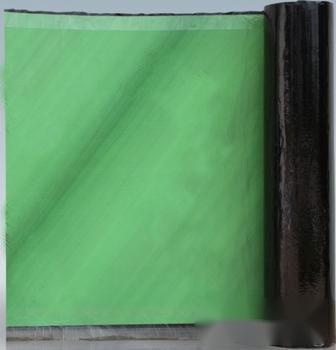1. Product Introduction:
PCM reactive bonding polymer wet-laid waterproof membrane is made by coating a layer of rubber asphalt self-adhesive material with creep functionality on the upper or lower surface of the PCM strong cross membrane, then covered with a silicone oil anti-adhesion isolation film. This product combines PCM rapid response bonding technology with the superior performance of PCM strong cross membrane.
When the PCM reactive bonding polymer wet-laid waterproof membrane is bonded to the concrete structure layer, it is like performing a skin graft on the body, forming a closed, tightly sealed, highly extensible, thin, and functional protective layer.
2. Product Features:
Excellent physical properties: PCM strong cross membrane adopts cross-overlapping compression technology, providing higher tensile strength, greater elongation, better tear resistance, high impact resistance, stable dimensions, excellent puncture resistance, weather resistance, and corrosion resistance compared to ordinary membranes!
Bonding performance: The membrane chemically reacts and physically adsorbs with the polymer cement and concrete structural layer, forming a physical-chemical bonding layer with a bonding strength far greater than that of physical adsorption. This creates an interface sealing layer that prevents water penetration, combined with the excellent waterproof performance of the PCM strong membrane, forming a single-layer membrane with a double-line waterproof effect.
Superior waterproof effect: The "water-locking" self-healing function does not diffuse, is easy to repair, has strong root resistance and self-healing capabilities, and prevents hard objects or plant roots from piercing the membrane; in the event of minor damage, it can self-heal, and in the case of base cracks, it can effectively resist through the closed layer and flexible dual creep anti-crack structure.
Simple construction process: PCM reactive bonding polymer wet-laid waterproof membrane can be directly constructed on damp or moisture-laden concrete substrates, requiring low substrate requirements, shortening construction time, saving construction costs, and using polymer cement slurry to firmly bond the membrane without open flame operations, making it environmentally friendly. The second waterproof layer or membrane overlap can be dry-laid or wet-laid (directly bonded with polymer cement), PCM membrane also has good crack resistance and is easy to cut and construct.
3. Applicable Scope:
(1) Waterproofing and anti-seepage for various underground projects, such as basements, subways, tunnels, etc.;
(2) Waterproofing for roofs and exterior walls of industrial and civil buildings, as well as waterproofing in areas with significant structural deformation;
(3) Waterproofing projects for large water pools, reservoirs, textile factories, oil depots, and buildings or structures subject to seawater corrosion.
Specifications:
Width: 1.0m, 2.0m
Thickness: 1.2mm, 1.5mm, 2.0mm
Length: 10m, 15m, 20m, 30m
Note: Other specifications and sizes of self-adhesive waterproof membranes can be determined through negotiation between the supplier and the buyer.
4. Packaging, Storage, and Transportation
(1) Sealed packaging in special plastic bags, stored in a dry, ventilated environment to prevent exposure to sunlight and rain;
(2) Different categories and specifications should be classified and stacked separately, and should not be tilted or cross-pressed;
(3) The membranes should be placed flat, with a stacking height not exceeding five layers;
(4) During transportation and storage, keep away from fire sources, with a storage temperature not exceeding 35℃, and a storage period of 1 year.
5. Construction Process and Precautions
Substrate treatment → Prepare polymer cement slurry → Node treatment → Membrane laying → Membrane head processing → Waterproof layer acceptance → Protection layer construction
6. Precautions
1. The substrate should be flat, clean, and free of standing water;
2. Detailed node treatment should be done at locations such as pipes, corners, flat interfaces, and expansion joints;
3. No personnel should walk on the polymer cement slurry before it dries, and subsequent construction can only proceed after the polymer cement slurry has completely hardened.













